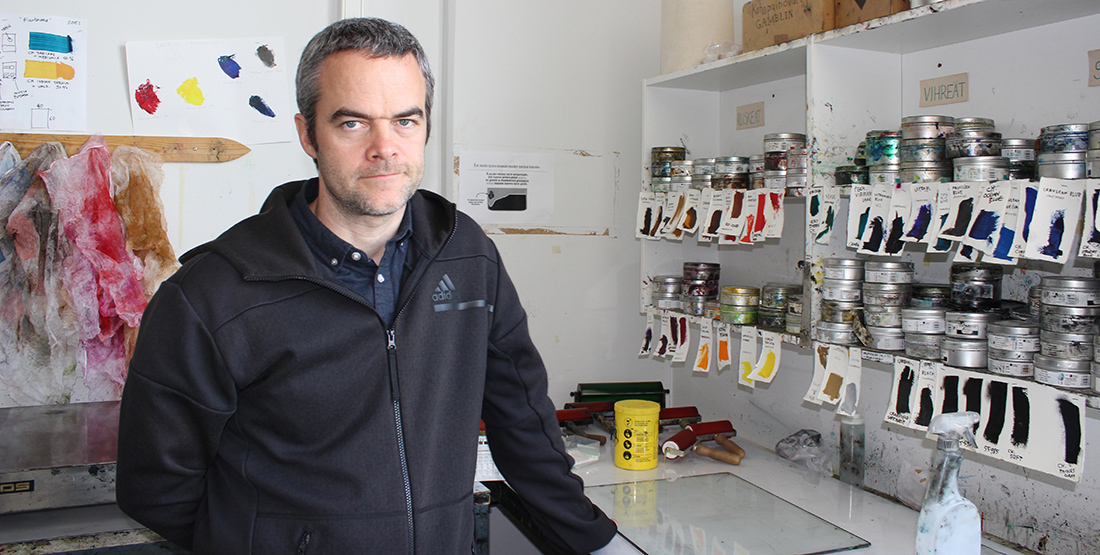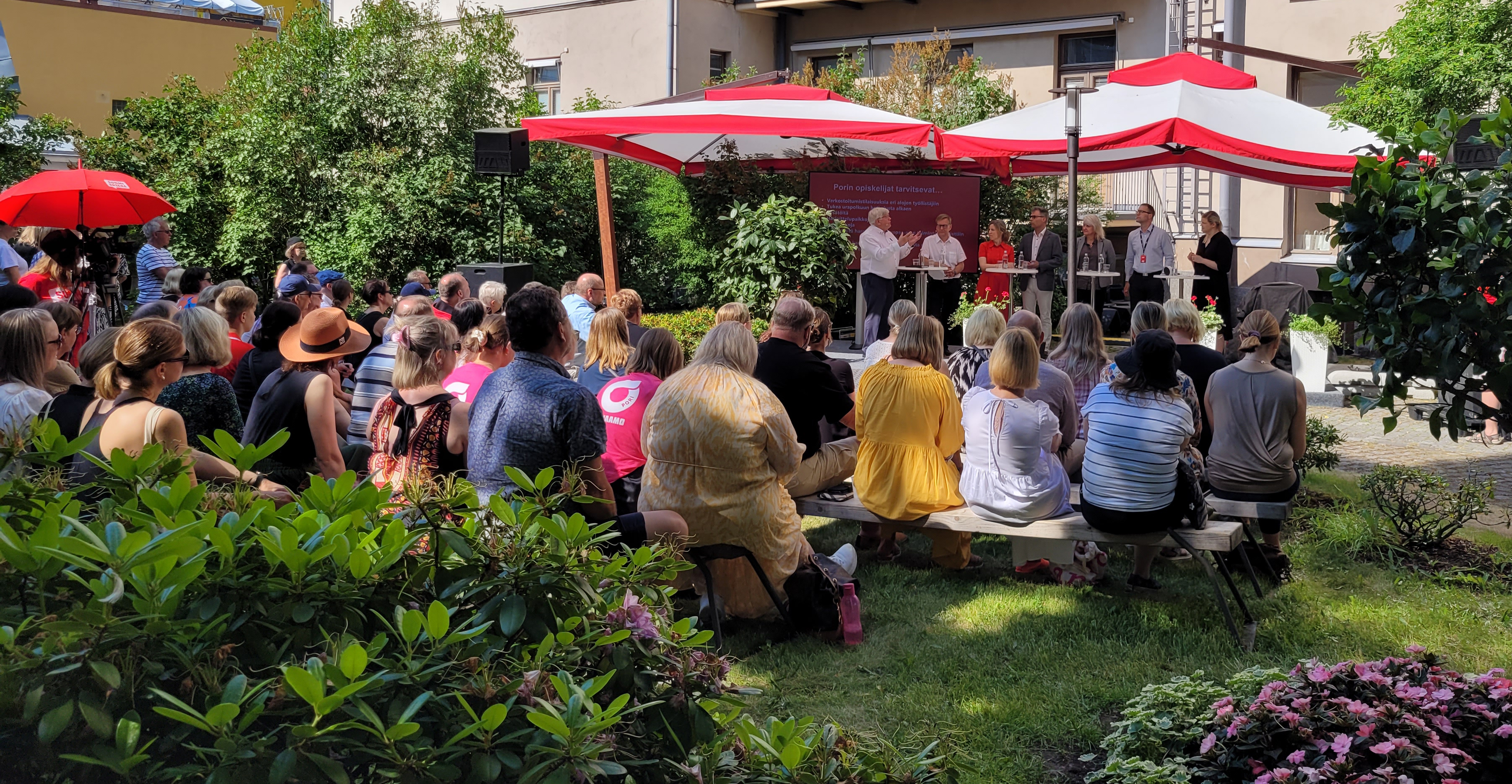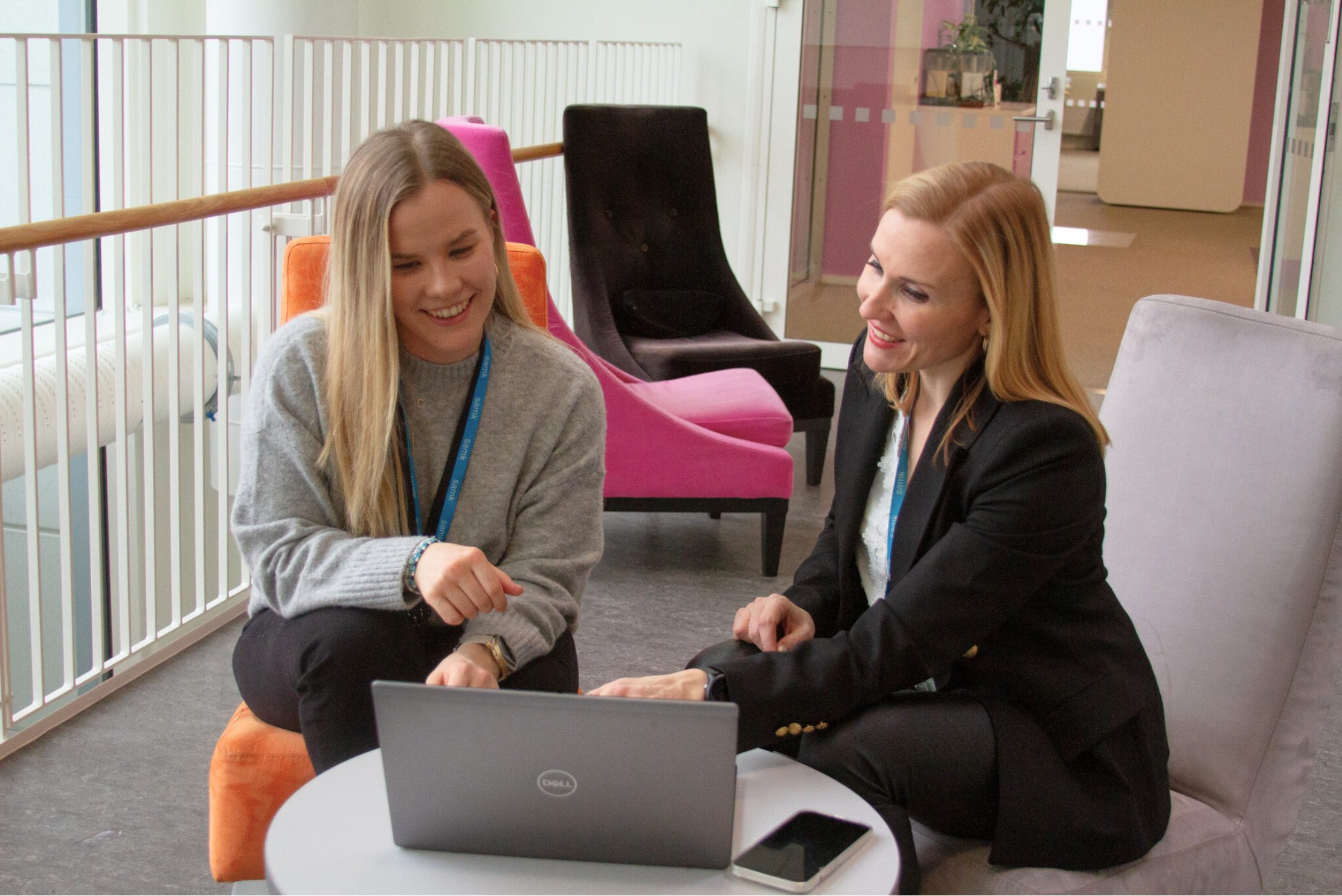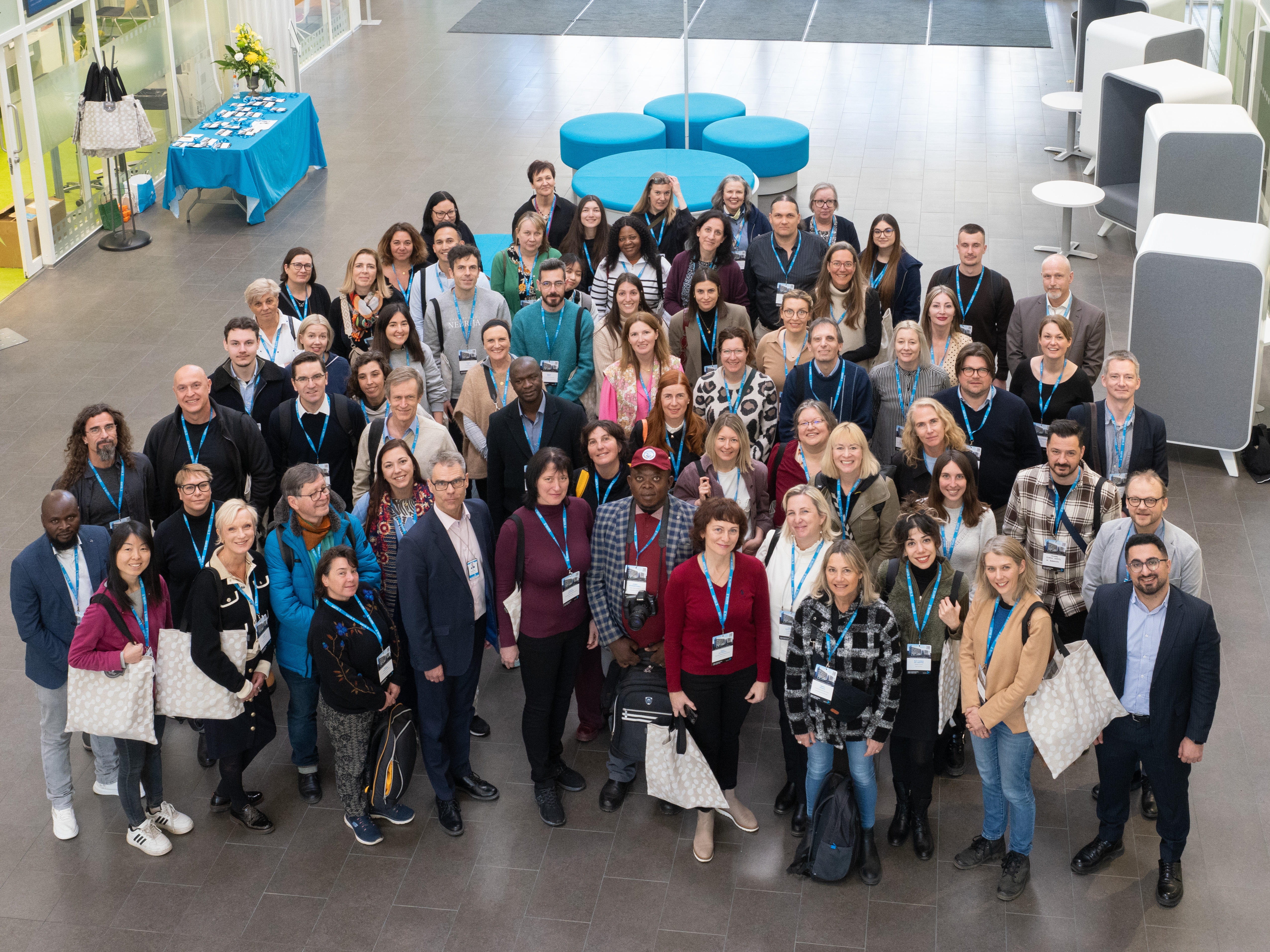A graphics teacher learns how others see the world as he teaches the basics of art
Artists have been graduating from Kankaanpää for over 50 years. The campus employs around a dozen visual arts professors, project workers, and part-time teachers. Tomas Regan started teaching the graphic arts in Kankaanpää in early 2020.

Teaching has always been a part of a visual artist’s work, and according to Regan, it has also been a natural part of his own career.
– Teaching also allows me to develop. When I’m teaching my students, I see how others perceive and depict the world. You also learn to verbalise things when you teach, and that doesn’t always come naturally to artists. I think it’s really interesting to learn more about other people and visual expression, and teaching offers me this opportunity, says Regan.
Regan has enjoyed his work at SAMK for the past two-and-a-half years. The Fine Arts Campus is small, which provides great flexibility for the staff and good opportunities for developing the campus. According to Regan, the student community is also close-knit, and the gap between teachers and students is fairly small.
– The same group of students studies together quite closely for four years, so we become quite familiar with each other, says Regan.
The four years of studies merge at the Fine Arts Campus into one long study period, where the learning process continues, even if the courses change. This also affects the supervisory relationship between students and teachers.
Distance learning cannot replace face-to-face teaching
The COVID-19 pandemic has naturally also left its mark on everyday life on the Fine Arts Campus, but teaching has nevertheless been implemented successfully. Regan, who lives in Tampere, carries out part of his work from home. For example, administrative tasks, meetings, and student guidance can all be handled remotely. However, Regan believes that face-to-face teaching can never be completely replaced in art education, as interaction between the teacher and the student is very important.
– Creating something concrete requires face-to-face instruction. On the other hand, I also believe that distance learning is a good option for theory lectures. In my experience, students focus on lectures even better remotely, says Regan.
Due to the pandemic, art education providers have had to consider what can be done remotely, and what cannot. Much depends on the student’s own abilities and the resources available to the student. The situation has required great commitment from SAMK’s staff, as they have had to make sure that none of the students get left behind.
– Connecting with students and checking in on their wellbeing is much easier face-to-face than remotely.
The Fine Arts Campus is an international community, as exchange students regularly come to the art school, and the campus’s own students also participate in exchange programmes. SAMK is constantly looking for new contacts for both student and teacher exchanges, as internationality plays an important role in the field of arts.
Encouraging students to become independent
The Fine Arts Campus was originally designed as an art school. Regan also praises the building, which was completed in 1995. The art school provides great facilities for studying and creating art using a variety of techniques. The campus has a small library with a fairly comprehensive collection, and cosy and beautiful facilities.
Previously, Regan worked at the Summer University of Tampere, among other places. In a small country like Finland, there are not many permanent positions available for art teachers, so Regan is very happy to be able to work at SAMK.
As a teacher, Regan wants to encourage students to act as independently as possible. Networking and flexibility are key when working in a creative field. Teachers also have to think about what students should be taught to prepare them for the future world of work.
– The job description of an artist is diverse, and everyone can cultivate their own way of being an artist. Already during their studies, we encourage students to implement projects that allow them to learn about everyday life and real problems and challenges of a visual artist. This allows students to learn how to handle difficult situations before entering working life.
Based on the feedback received from students and alumni, in addition to technical competence, studies that promote stress tolerance, creative problem solving, and the ability to handle unexpected situations are also considered important.
This was also addressed in the “Yli vaaran vuosien” project, which was led by SAMK. The aim of the project, which was implemented in collaboration between four universities of applied sciences, was to develop work-based learning and internship practices. The project work continues in the fields of public art, augmented reality, sustainable development, event management, and digital learning, among other things.


